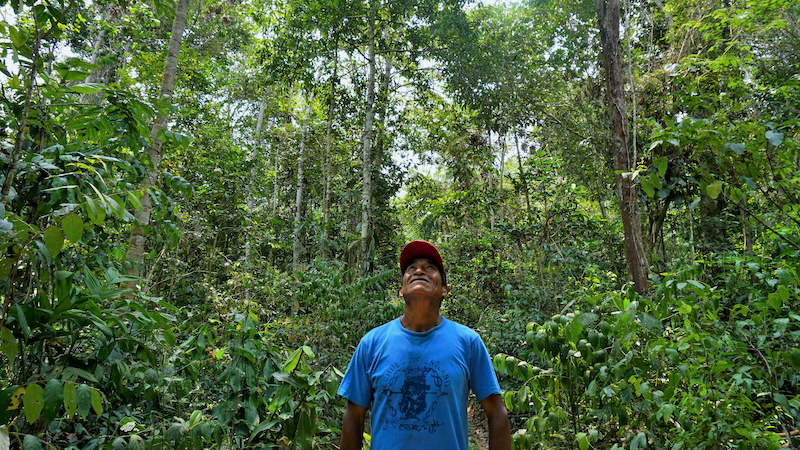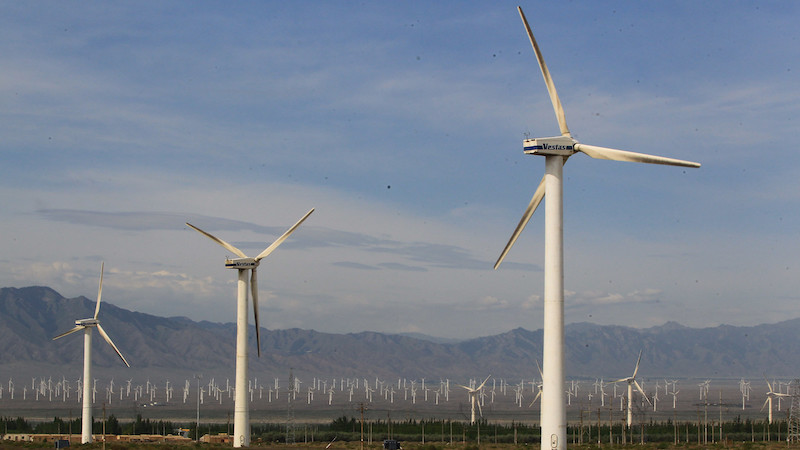Developers of carbon credit projects will have to carry out a risk assessment and minimise any social or environmental impacts
The UN’s new carbon market will have a compulsory mechanism that aims to prevent developers of carbon credit projects from breaching human rights or causing environmental damage with their activities – a first for the UN climate process.
Developers of projects under the UN’s new Article 6.4 carbon crediting system will be required to identify and address potential negative environmental and social impacts as part of a detailed risk assessment under new rules adopted by technical experts in Baku, Azerbaijan, on Thursday.
Developers will also be asked to set out how their activities contribute to sustainable development goals like ending poverty or improving health, alongside their primary objective of reducing greenhouse gas emissions.
Maria AlJishi, chair of the Supervisory Body in charge of setting the rules, said in a statement that “these new mandatory safeguards are a significant step towards ensuring that the UN carbon market we are building contributes to sustainable development without harming people or the environment”.
‘Challenging’ balance
The risk reduction measures introduced by the so-called “Sustainable Development Tool” represent an attempt to grapple with widespread concerns over the harm caused by some carbon credit projects around the world.
The Clean Development Mechanism (CDM) – the previous UN carbon market set up to help richer countries meet their emissions-cutting pledges – was dogged by accusations of social and environmental abuses linked to its registered projects. They included, for example, toxic pollution from a waste-to-energy facility in India, forced relocations due to infrastructure like a hydropower dam in Panama, and villagers in Uganda being denied access to land they used to grow food as a result of a tree-planting project.
The CDM had only a less-rigorous voluntary safeguarding mechanism that was heavily criticised by civil society.
The approval of the new Sustainable Development Tool this week marks the end of a two-year process to agree on the rules, which will work alongside an appeals and grievance procedure rubber-stamped earlier this year.
Kristin Qui, a Supervisory Body member closely involved in developing the tool, told Climate Home it had been “very challenging” to get it right. “Everyone wanted to find the right balance between making sure the tool can be used while at the same time being as stringent as possible,” she added.
Risk assessment
Under the new rules, project developers will have to fill out an extensive questionnaire designed to assess the risk their activities could pose in 11 areas, including land and water, human rights, health, gender equality and Indigenous Peoples.
They will have to describe how they are planning to avoid any negative impacts or, if that is not possible, the measures they are taking to reduce them, as well as procedures to monitor their implementation.
External auditors will review the risk assessment, check that local communities have been properly consulted and evaluate the appropriateness of the actions proposed by the developers. The rules will apply to both new projects developed under Article 6.4 and to over a thousand more that are seeking to transfer into the new market from the CDM.
Chinese wind farms are among the most prevalent CDM projects seeking transition. Photo: Asian Development Bank
Isa Mulder, a policy expert at Carbon Market Watch (CMW) and a close observer of Article 6 negotiations, said the tool “should go a long way in upholding rights and protecting people and the environment”.
She added there is still room for improvement on certain provisions and said the mechanism will need to be used as intended for it to be effective, but called it “a really good start”.
The Supervisory Body will review and update the safeguarding tool every 18 months, striving to improve it based on feedback from those involved.
Japan backs fossil fuels in Southeast Asian “zero emission” initiative
In addition to the risk assessment, the mechanism will require project developers to assess the potential impacts of their activities on country efforts to meet the 17 Sustainable Development Goals, adopted by the UN in 2015 and due to be met this decade.
Qui said the tool will make project developers reflect more closely on how they can share benefits with local communities.
“It poses the question of how the project is actually going to contribute to sustainable development in addition to simply avoiding harm and encourages a high level of engagement with Indigenous populations from the get-go,” she added.
Road to Baku
The approval of the Sustainable Development Tool is seen as an important stepping stone towards achieving the full operationalisation of
Read More


